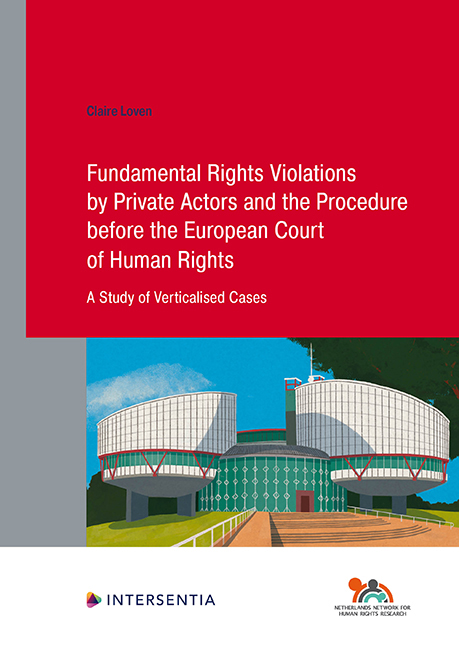 Fundamental Rights Violations by Private Actors and the Procedure before the European Court of Human Rights
Fundamental Rights Violations by Private Actors and the Procedure before the European Court of Human Rights Published online by Cambridge University Press: 29 February 2024
INTRODUCTION
The previous chapter showed that the Court can offer substantive protection of Convention rights in relations between private actors through the concept of horizontal positive obligations. To reiterate, this is explained by the fact that Article 34 of the Convention requires complaints to be directed against a Convention State in order to be admissible ratione personae. It is thus inherent in the Convention system that proceedings before the Court are of a vertical nature; that is, they involve a private actor (an individual, a group of individuals, or a company) who has lodged an application against a Convention State. Yet, this does not mean that these vertical proceedings cannot originate from a conflict between two private actors at the domestic level. A complaint stemming from a horizontal conflict at the domestic level can be successfully brought before the ECtHR, where it is transformed into a vertical – and thus ‘verticalised’ – case.
As discussed in the previous chapter, many cases coming before the ECtHR are, in fact, verticalised cases. They can originate from a wide range of horizontal conflicts and so can involve many different issues and Convention rights, including, for example, defamation cases, but also cases between an employer and an employee about wearing religious symbols at work.
The very fact that so many cases before the ECtHR are verticalised and originate from such manifold horizontal relationships implies that they have different characteristics and that the Court may need to take account of their variety by dealing with them differently. For example, the private actors involved may be different, just like the manner in which their relationship is regulated in domestic law, the types of procedures available for redress at the national level, and so on. To provide an insight into and a better understanding of the various characteristics of verticalised cases and the approach the Court takes in dealing with them, this chapter offers an in-depth analysis of the Court's reasoning in ruling on such verticalised cases. First, the origins of verticalised cases are described by discussing differences in the nature of, and the parties involved in, the conflict at the domestic level (Section 2) so as to provide insight into the characteristics of the conflict giving rise to the case before the Court.
To save this book to your Kindle, first ensure no-reply@cambridge.org is added to your Approved Personal Document E-mail List under your Personal Document Settings on the Manage Your Content and Devices page of your Amazon account. Then enter the ‘name’ part of your Kindle email address below. Find out more about saving to your Kindle.
Note you can select to save to either the @free.kindle.com or @kindle.com variations. ‘@free.kindle.com’ emails are free but can only be saved to your device when it is connected to wi-fi. ‘@kindle.com’ emails can be delivered even when you are not connected to wi-fi, but note that service fees apply.
Find out more about the Kindle Personal Document Service.
To save content items to your account, please confirm that you agree to abide by our usage policies. If this is the first time you use this feature, you will be asked to authorise Cambridge Core to connect with your account. Find out more about saving content to Dropbox.
To save content items to your account, please confirm that you agree to abide by our usage policies. If this is the first time you use this feature, you will be asked to authorise Cambridge Core to connect with your account. Find out more about saving content to Google Drive.